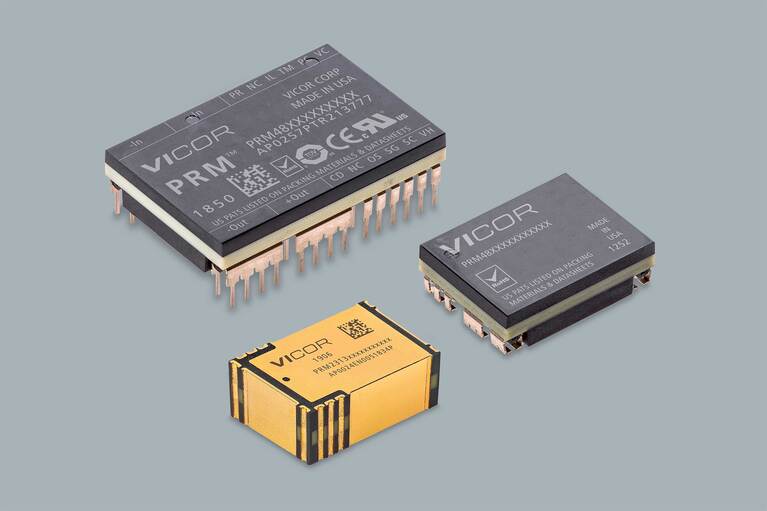
Accelerate your move to a high performance 48V power delivery network
This eBook provides guidance on designing 48V power delivery networks to enhance the performance, efficiency, and reliability of industrial products
Satellite communication usually requires a large dish antenna. In addition, for moving vehicles, planes and boats antenna-positioning motors and controllers are needed to ensure that the antenna accurately tracks the relative position of the satellite. Mounting these cumbersome assemblies in a position to maintain a clear visual satellite connection is often impractical. This customer was developing an electronically steered solid-state phased-array antenna with no positioning motors to significantly reduce the antenna profile. The key goals were:
The antenna’s processing signals required a well-regulated 1.5V 80A supply
Provide a small, robust and reliable low profile power solution
Factorized Power Architecture (FPA) separates the regulation and voltage transformation stages into separate components. The resultant design flexibility simplified the implementation and met the system requirements of small size and a low profile. Fast load response and high switching frequency eliminated many hold-up capacitors saving space.

Performance maximized by fast response of FPA to ASIC’s pulsed current demands

Reduced footprint (11cm2) and ultra-low profile (<7mm)

Future ASICs with lower voltages (<1V) and higher currents (+100A) can use the same, scalable, small-footprint architecture
The Vicor VTM (transformation) supplied the high current 1.5V rail and was placed close to the ASIC. The PRM (regulation) was sited at the PCB edge since its 48V output bus to the VTM carried only low currents and provided reduced bus distribution losses. This arrangement saved space and optimized voltage regulation at the ASIC. To analyze this power chain, go to Vicor Whiteboard online tool.

Non-isolated regulated
Input: 48V (36 – 75V)
Output: 48V (5 – 55V)
Power: Up to 600W
Peak efficiency: 98%
As small as 22.8 x 13.8 x 7.41mm
Accelerate your move to a high performance 48V power delivery network
This eBook provides guidance on designing 48V power delivery networks to enhance the performance, efficiency, and reliability of industrial products
Build better UAVs using modular power
Power Delivery Networks (PDN) based on Vicor high performance power modules enable innovative designs for the next generation of UAV development
UAV Market Trends and Power System Seminar 2025 Taipei, Taiwan
Power modules enable top performance and innovation for today’s advanced UAVs
High-efficiency, high-density modules free up space for advanced communications and extend range
High-efficiency class of UAV depend on solar power to meet its long flight time requirements




